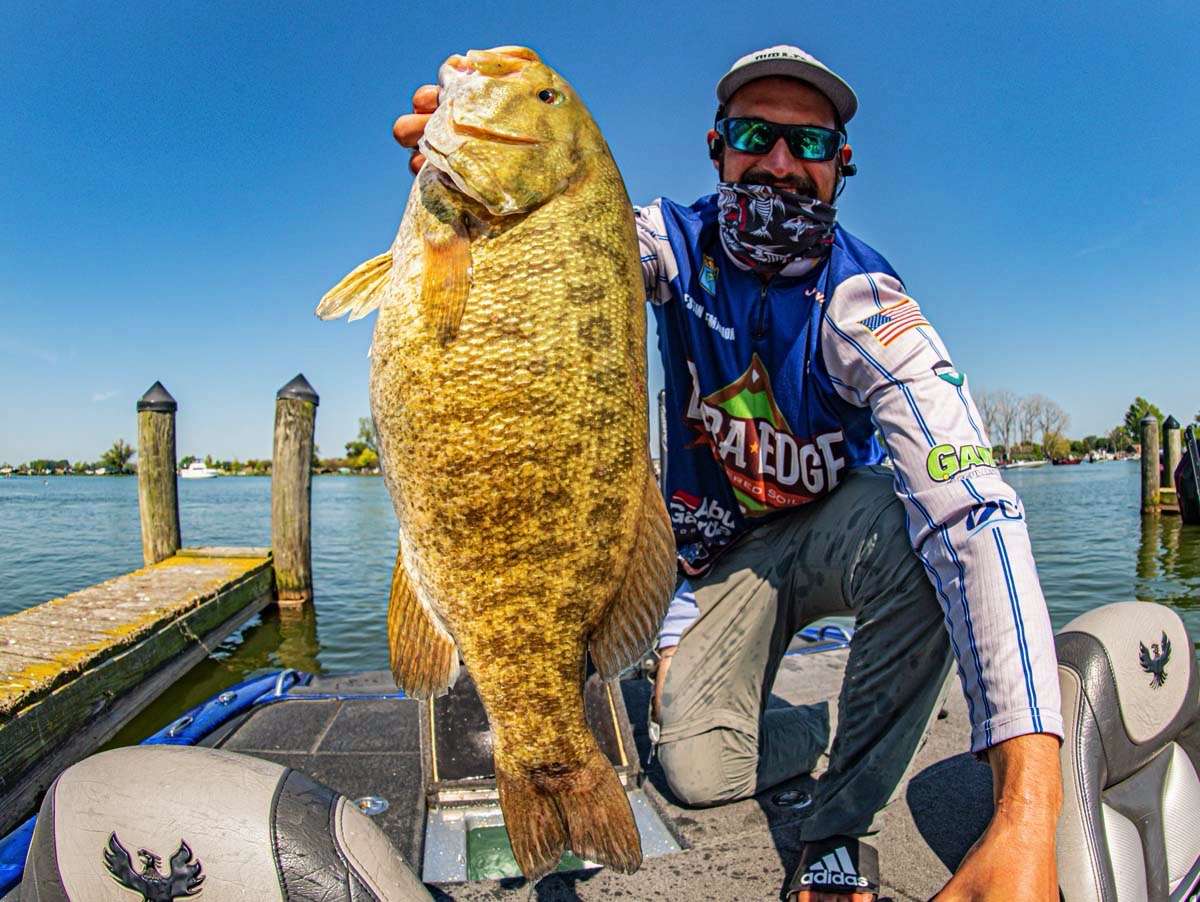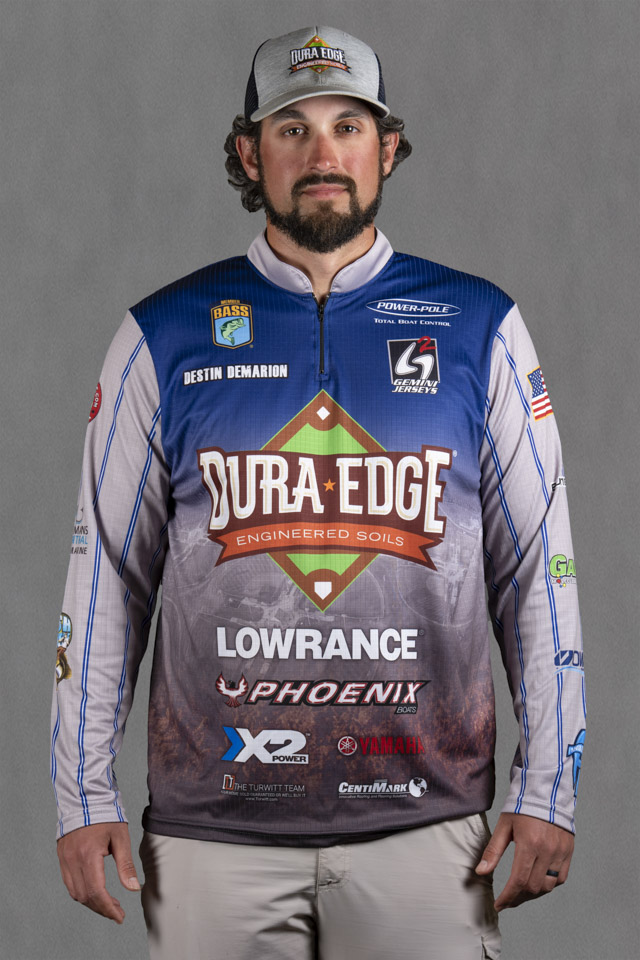
Picture this: You’re on the lake slaying some big smallmouth off of your forward-looking sonar, and the bionic Terminator version of a bass slides onto your screen. “Come with me if you want to live,” you say to the bass you’re looking at on the screen. Next, it inhales your Berkley Maxscent Flatworm … don’t worry, we release them happily back into the water each day.
The dominance of forward-looking sonar was never more evident than during our latest northern swing including the New York events and Lake St. Clair. We can even rewind back to Lake Eufaula, and you will notice a similar theme in all the tournaments: the utilization of these bass catching tools. Whether it’s Humminbird MEGA 360 Imaging, Garmin Panotpix Livescope or Lowrance LiveSight, each has their fair share of use across the bows of the Elite Series field.
Since we recently wrapped up our Lake St. Clair event, let’s dive in there. Going into St. Clair, I figured forward-looking sonar would be a factor and most likely a big one. Although it’s not a silver bullet everywhere you go or in every situation, in the situations it does excel in, it’s a tremendous advantage. This is something I’ve learned over the last couple years utilizing both 360 and Panoptix.
I’m someone who loves to sight fish for bass. Whether they are on a bed during spawning season or just cruising around, it’s something that I enjoy and something I can usually do well when they are visible. Consider forward-looking sonar sight fishing of sorts. You can see how far a fish is away from you, line up your casts and even see how the fish reacts to it.
The first day I arrived at St. Clair the fish were acting like they hadn’t seen a bait before. They had just been pressured from the recent FLW Tour event as well as a big two-day local event the weekend we arrived. I would look around with my electronics on the bow and be able to tell whether it was a small fish like a perch or rock bass or a big fish like a musky or sturgeon. I could even tell if it was a bass and how big it was, relatively. Nearly every presumed bass I cast to would bite almost immediately, and I would watch it all go down on my screen.
As practice progressed, the bites dwindled, and I saw progressively less of them on the screen. Presumably this was due to fishing pressure and conditions changing. However, when I did get a bite, they were the right ones.
Now, believe me, I spent time doing things I enjoy a lot more than dropping on fish and playing the video game deal. I prefer power fishing and catching fish on moving baits, if possible. However, after fully anticipating being able to crank them up at St. Clair, I never felt like I could catch more than 17 or 18 pounds doing so.
Once it was game time, I knew I would lean heavily on the drop shot and play my real life version of an EA Sports Bass Fishing game on my screen throughout the week. A crankbait, a tube and a spybait did catch a few fish I weighed in during the event. But, as expected, the vast majority of the ones I took to the tanks that helped me secure a good finish at St. Clair were caught while I watched them eat my Maxscent Flatnose Minnow on a drop-shot rig. I caught fish right next to the boat out to as far as 40 yards away.
The moral of the story is, even if you can see the fish ahead of you like a video game, forward-looking sonar will not prevent you from ripping your pants while landing them.
See bass ahead of you. Line up and cast. Watch bait fall on bass. Set the hook.
“Hasta la vista, bassy.”





